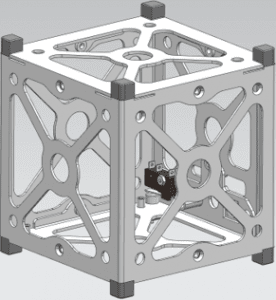Small scale satellites - Digital twin
The global market for smaller scale satellites in space is expected to reach $491.3m by 2027, growing over 15 percent per year says Allied Market Research.
A CubeSat is a cubical-shaped small satellite measuring 10x10x10 cm3- approximately the dimension of the popular Rubik’s cube weighs around 1 kg. A CubeSat can be used as a single unit (1 U) or in clusters of several units or U’s (1U, 2U, 3U, 6U, and 12U, among others).
The growing number of missions covered with microsatellites increases the need for numerical simulations.
Create a 3D model suitable for FEA
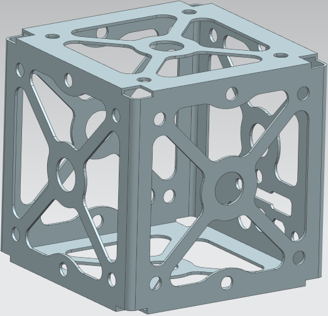
Fom IGS to 3D solid
Very often, the provided CAD model is not adapted to CAE because it is made of a collection of surface (and not 3D solids) and contains details that are not relevant for the type of insights one wants to gain from the numerical mock-up. Our simulation workflow makes it easy to remove unnecessary details and constructing 3D solids.
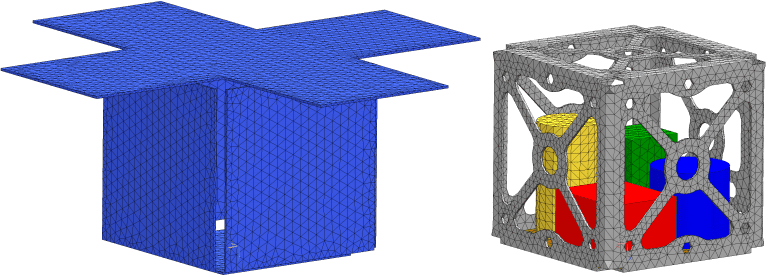
Multiphysics simulations
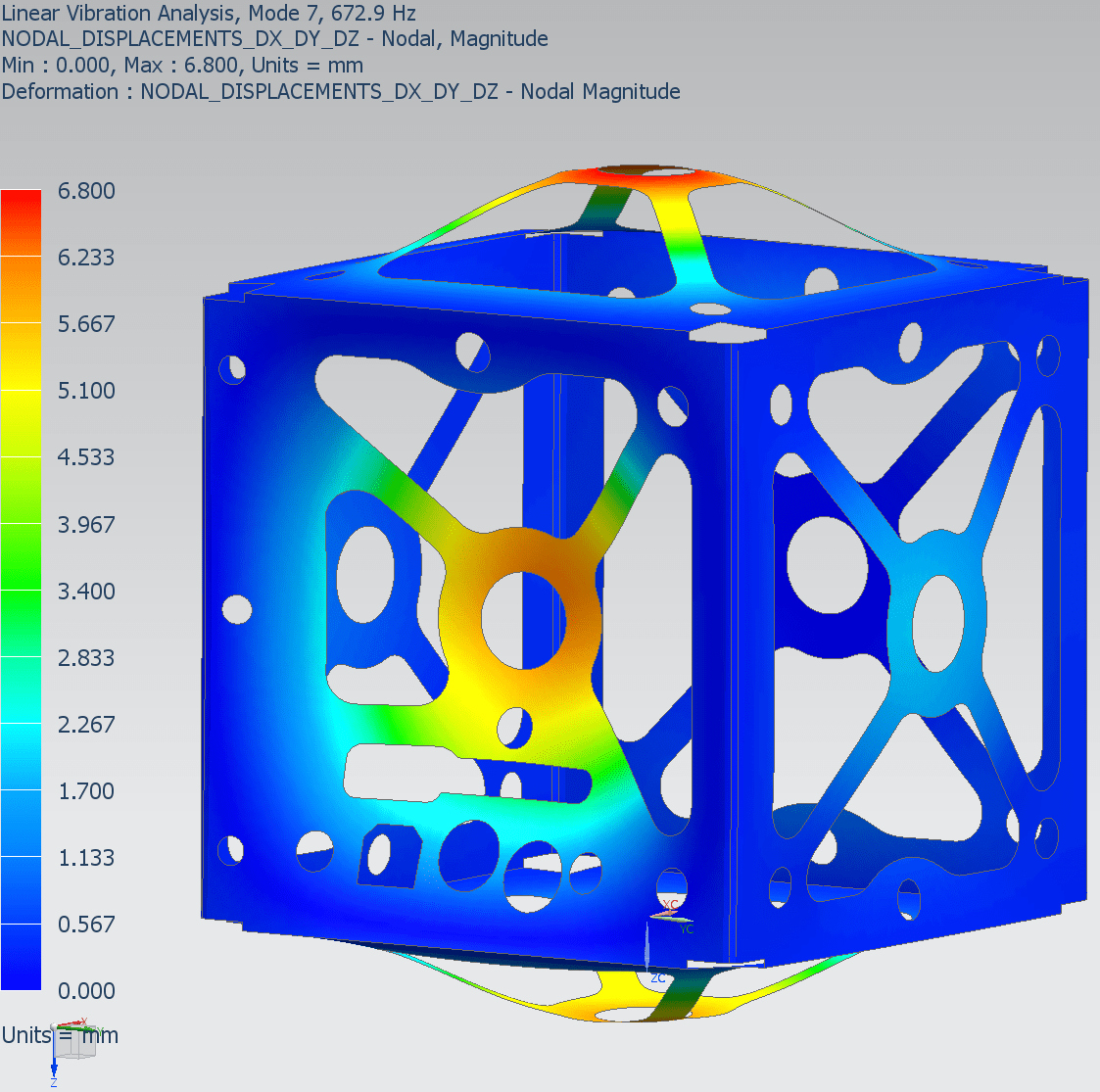
Structural design
During the launch, a satellite is submitted to static and dynamic loading. Using the OOFELIE::Multiphysics solver permits to consider: modal analysis, and random vibration (PSD) analysis.
The picture on the right shows one mode of vibration for e.g.
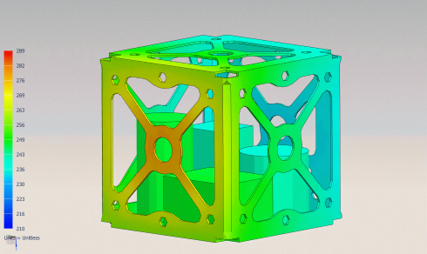
Thermal design
The OOFELIE::Multiphysics solver permits also to assess of the impact of thermal loads during operation in Earth orbit. Assessing the impact of thermal stresses on the mechanical response can be done within the same solution.
The picture on the left shows the temperature distribution a given time for e.g.

An holistic Approach
The OOFELIE::Multiphysics solver can give you access to even more insights, global or local, on your design with additionnal simulations capabilities in the field of electromagnetics, flexible mechanisms, sensors ...
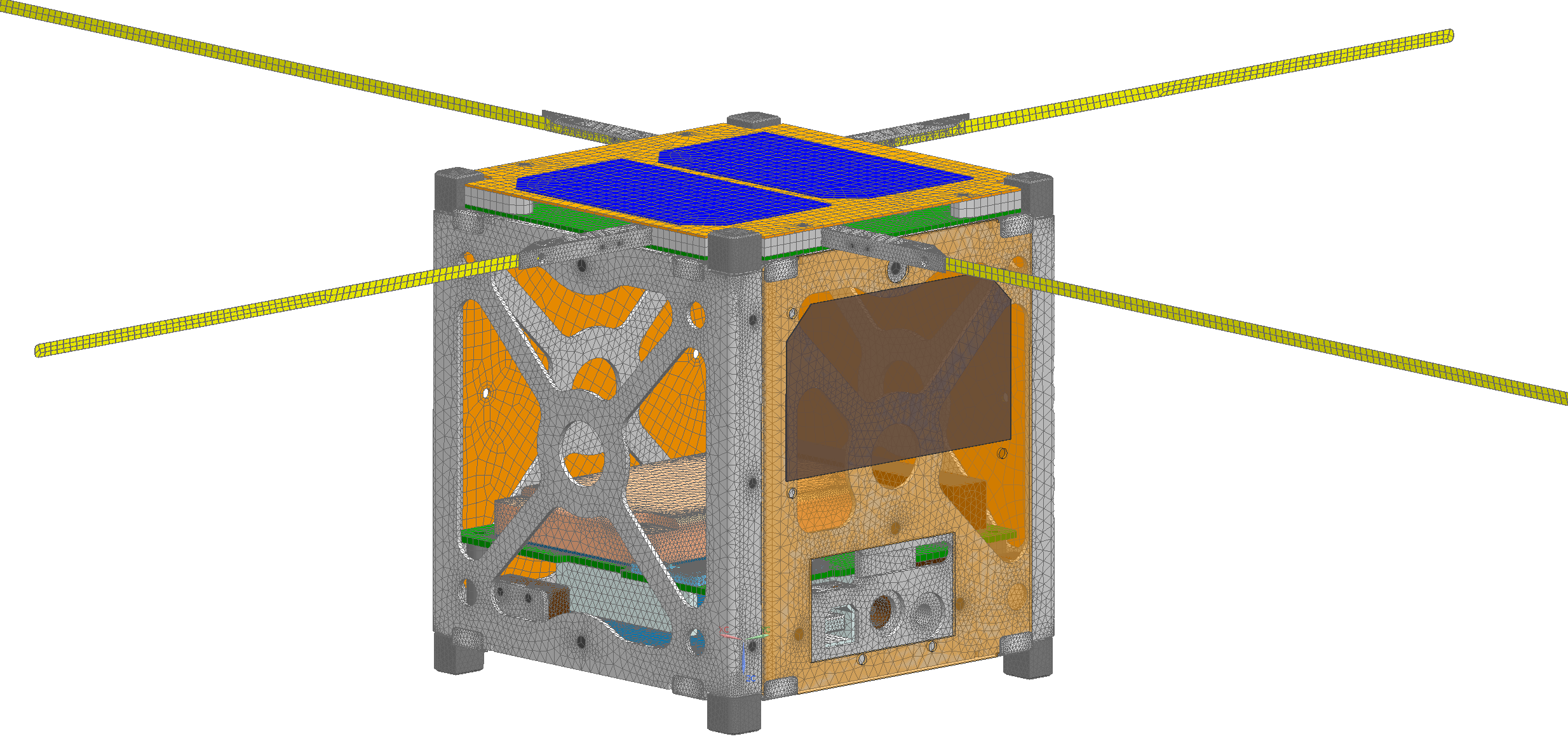
Small satellite and its equipments
Analyse the behaviour of your satellite with its payload and equipments
In the following video, the variation of the temperature distribution inside a Cubesat is presented. Temperature changes with respect to its position in orbit. Deep space, earth albedo, and heat generated by electrical equipment inside the microsatellite are taken into account.

